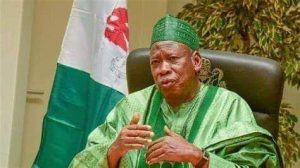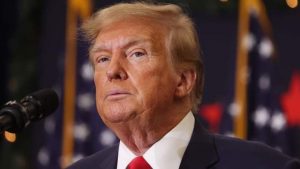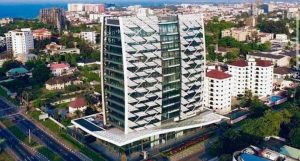OPINION: Solving Nigeria’s Metering Conundrum – Odion Omonfoman | GOVERNMEND

Liberalising customer metering by de-coupling the cost of electricity meters from energy tariffs under a revised MAP Regulation is the surest way to finally address the metering gap both now and in the future. The CBN financing under the NMMP should be applied towards financing electricity customers who are unable to afford the upfront cost of a meter.
The review of the MAP Regulations 2018 and the development of a new policy framework on customer metering by the Federal Ministry of Power provides an opportunity to look at how meter procurement by electricity customers can be further liberalised to finally address the perennial metering gap and estimated billing challenges in the Nigerian Electricity Supply Industry (NESI).
Metering electricity customers has always been a challenge in the NESI. The major impediment to effective metering and closing the metering gap has been finance. Since the start of the reform of the electricity sector under President Olusegun Obasanjo, there have been several mass metering interventions by the Federal Government and the Nigerian Electricity Regulatory Commission (NERC) to close the metering gap. Many of these mass metering interventions were funded by the Federal Government, which provided direct funding to selected meter companies to import and roll-out prepayment meters to electricity customers. The Federal Government also provided monetary and fiscal incentives, such as concessionary funding, duty waivers, duty reduction and tax waivers to local meter assemblers to stimulate the assembly of meters in Nigeria.
Regulatory interventions in mass metering by the NERC were primarily designed for the customers to provide financing for the meters, which would be refunded back to the customer by the electricity distribution companies (DisCos) in the form of energy rebates. The most recent intervention by the NERC is the Meter Asset Provider (MAP) Regulations, which, according to Mr. Abdulkadir Shettima, a General Manager at the NERC, has been the most successful mass meter rollout programme till date. Under the MAP scheme, electricity customers financed a total of 611, 234 electricity meters between June 2019 and December 2020, when the MAP scheme was put on hold by DisCos.
To further fast-track the mass roll-out of electricity meters, the Federal Government, in November 2020, launched the National Mass Metering Programme (NMMP), a Central Bank of Nigeria (CBN) funded intervention in customer metering. The main thrust of the NMMP is to close the metering gap by providing Nigerians with six million free meters. The Federal Government and the CBN must be commended for the bold initiative to provide the funding for the mass roll-out of meters under the NMMP free of charge to electricity customers. However, further to the on-going review of the MAP regulations, the NERC would need to fully disclose to Nigerians that the cost of the six million meters, plus an interest of 9 per cent per annum will be included in their electricity tariffs over the next ten years.
Why Isn’t there Financing for Customer Meters?
In my opinion, the major challenge of attracting financing to address the metering gap is the inclusion of the cost of meters and metering services in retail energy tariffs.
Under the current Multi Year Tariff Order (MYTO) tariff methodology, the cost of meter assets and provision of metering services (such as site evaluation, meter installation, meter reading, meter maintenance, meter repairs, e.t.c) to electricity customers are recognised as part of allowable regulatory capital and operating expenditure (CAPEX and OPEX) requirements to be recovered by DisCos from retail electricity tariffs paid by electricity customers.
Besides the cost of energy purchased from Nigerian Bulk Electricity Trading (NBET) Plc/electricity generation companies (GenCos), one key variable input to a DisCo’s retail electricity tariffs is the level of regulatory CAPEX and OPEX, which the NERC allows the DisCo to recover. The higher the allowable CAPEX and OPEX costs, the higher the retail electricity tariffs would be to enable the DisCo recover these allowable costs. The trade-off is that higher CAPEX means more investments by the DisCo to improve the network and to reduce both technical and non-technical losses. A combination of network improvement and significant loss reduction arising from the increased CAPEX investments should, in theory, bring down retail electricity tariffs.
Unfortunately, the power sector is plagued by a liquidity crisis as retail electricity tariffs are not cost–reflective, and thus are insufficient to cover allowable CAPEX costs for network improvement and loss reduction by DisCos. Consequently, investments in metering and other network improvements have been quite insignificant. The NERC, in its consultation paper on the review of the MAP Regulations, admits that the “prevailing absence of cost reflective tariffs, a contributory factor to the impairment of DisCos’ balance sheets, adversely impacts on the capacity of DisCos to raise the necessary financing to support critical investments including but not limited to the metering of customers”.
De-Coupling the Cost of Metering From Energy Tariffs
The MAP Regulation was the first attempt by the regulator to de-couple the cost of meters and metering services from energy costs. This attempt resulted in Nigerians being able to procure their meters directly from Meter Asset Providers (MAP) who were required to install the meters within a regulated timeframe. The success of the MAP scheme, as alluded to by Mr. Abdulkadir Shettima, was perhaps due to the fact that DisCos did not have to worry about the impact of the meters procured under the MAP scheme on their regulatory asset base (RAB). In effect, the MAP meters had no immediate tariff impact for DisCos and electricity customers.
However, the above assertion is misleading. The reason why it appeared that the MAP scheme had no tariff impact for DisCos and electricity customers was because the NERC was yet to determine how electricity customers who financed their meters under the MAP scheme would recover such costs from the DisCos. With the new consultation paper on the review of the MAP scheme to incorporate the CBN financing framework for the NMMP, the NERC has clearly stated that DisCos are to refund the meter cost to electricity customers through a one-time energy credit. It would thus be interesting to see the revenue requirement and subsequent impact on electricity tariffs arising from DisCos’ refund of the financing cost for over 600,000 meters rolled out under the MAP scheme.
On the other hand, the NMMP is unambiguous on rolling back the cost of meters and metering services into retail electricity tariffs. Under this structure, the CBN would recover both the intervention and a 9 per cent interest rate charge directly from the energy collections of DisCos. While the CBN financing for the NMMP is a 10-year loan to DisCos, with a two-year moratorium on principal repayment, there certainly will be a significant tariff impact for all electricity customers – whether metered under the NMMP or not. The imposition of a 9 per cent interest rate (till year 2031) on retail electricity tariffs is inequitable to millions of electricity customers who can actually afford to pay upfront for their meters, if given a choice to pay.
As much as possible, I try not to compare the power sector with the mobile telecommunications industry. While both sectors are utilities, the underlying operating fundamentals and regulatory environment are quite different. Nonetheless, there are certain success characteristics which should be adopted in the power sector.
Nevertheless, it is safe to assume that the NERC would have to increase the annual CAPEX and revenue requirement for DisCos to accommodate the meter rollout under the NMMP, plus the 9 per cent interest payment to the CBN.
Adopting the Mobile Phone Strategy
Mobile phones are analogous to electricity meters. To solve the conundrum in the metering sector, let’s look at the telecoms sector and the roll-out of mobile phones to Nigerians.
Under President Obasanjo, Nigeria finally entered the league of countries that had rolled out the GSM telecommunications infrastructure. Since August 2001 when the first GSM call was made on the ECONET network, mobile telephone subscription has grown to over 200 million active lines. There are 151 million active mobile internet subscription as at January 2021. It is estimated that Nigeria has over 100 million mobile phone devices. This means that more than 50 per cent of Nigeria’s population have mobile phones. As internet data costs become cheaper and internet penetration and broadband connectivity improve, the number of mobile phones in the hands of Nigerians is expected to double.
The important role that telecoms play in our every lives cannot be overstated. From enabling commerce and facilitating the exchange of goods and services, telecommunications has buoyed the Nigerian economy, spurring innovations and development in almost all sectors of the Nigerian economy and the growth of a vibrant digital economy. Data from the Nigerian Communications Commission (NCC) shows that the telecoms industry contributed over 14 per cent to Nigeria’s GDP in 2020. The mobile phone has been instrumental in the quick penetration of telecommunication services and the internet. Farmers even use mobile phones to access agricultural extension services and purchase fertilisers.
As critical as the mobile phone is to the Nigerian economy, it is very important to note that the Federal Government did not develop a policy to finance the procurement of mobile phones for (poor) Nigerians. Mobile Network Operators (GSM companies) and mobile phone vendors did not have to make a case for the local manufacturing of mobile phones and the provision of foreign exchange for the importation of mobile phone parts and components. Mobile phone sellers do not seem to have challenges of accessing forex to import mobile phones, as they are able to pass the cost of the naira devaluation to mobile phone customers.
The cheapest smartphone in the Nigerian market is more expensive than a single phase prepayment smart meters, which is the most prevalent meter type in use by electricity customers. Despite the high cost of smartphones, students, market women, farmers and almost everybody from all walks of life are able to purchase and own these devices. I recall that my first mobile phone and GSM line was purchased via a six-month loan from National Bank (now Wema Bank) in 2001.
The success of the mobile telecoms industry and ubiquity of mobile phones in Nigeria can be pinned on the fact that the Federal Government liberalised the importation and retailing of mobile phones from the very onset, and allowed market forces to drive the purchase and affordability of the device. You can buy a mobile phone from just about anywhere. The more people were able to purchase mobile phones, the more mobile telecommunications services spread and also innovated. Today, Nigeria is Africa’s largest mobile phone market.
Unfortunately, this is not the case with electricity meters. Due to a slew of policies and policy reversals, regulatory inconsistencies and perhaps an over-regulation of the metering sector by multiple agencies, the electricity meter industry is near comatose. The metering sector would require the intervention of the CBN to finance the roll-out of one million meters under the first phase of the NMMP.
As much as possible, I try not to compare the power sector with the mobile telecommunications industry. While both sectors are utilities, the underlying operating fundamentals and regulatory environment are quite different. Nonetheless, there are certain success characteristics which should be adopted in the power sector. The liberalisation of the procurement of mobile phones is one of such characteristics.
Time to Liberalise Electricity Meter Procurement
Meter procurement by electricity customers should be liberalised. A key step to this is for the NERC to henceforth exclude metering costs as allowable regulatory costs to be recovered by DisCos from retail electricity tariffs.
Under a liberalised end user metering policy, the responsibility to provide meters would now be borne by the electricity customer as part of the requirement for service connection. Electricity customers would now purchase their meters directly from MAPs, each of which would be responsible for installing the meters at the customers’ premises and ensure that the meters are activated and connected to the DisCos’ backend metering systems. In effect, liberalising customer metering, as proposed, would make it compulsory for a customer to have a meter before being connected to a DisCo’s network. In this regard, electricity customers who do not have meters would not be connected to the electricity network. Customers who illegally connect themselves to DisCos’ network would also be easily identified.
Liberalising customer metering would bring immense benefits to the NESI and also to electricity customers, who suffer the twin effect of poor services and high estimated billing. The first benefit is that DisCos can increase their allowable capex requirement and deploy more investments to network improvements and reducing technical losses.
The liberalisation of customer metering does not violate licensing requirements for Distribution Licenses under section 67 and tariff requirement under section 76 of the Electric Power Sector Reform Act (EPSRA) 2005. Specifically, there is no particular provision in the EPRSA that mandates DisCos to be solely responsible for the procurement of electricity meters for end user electricity customers.
Source: Premium Times








